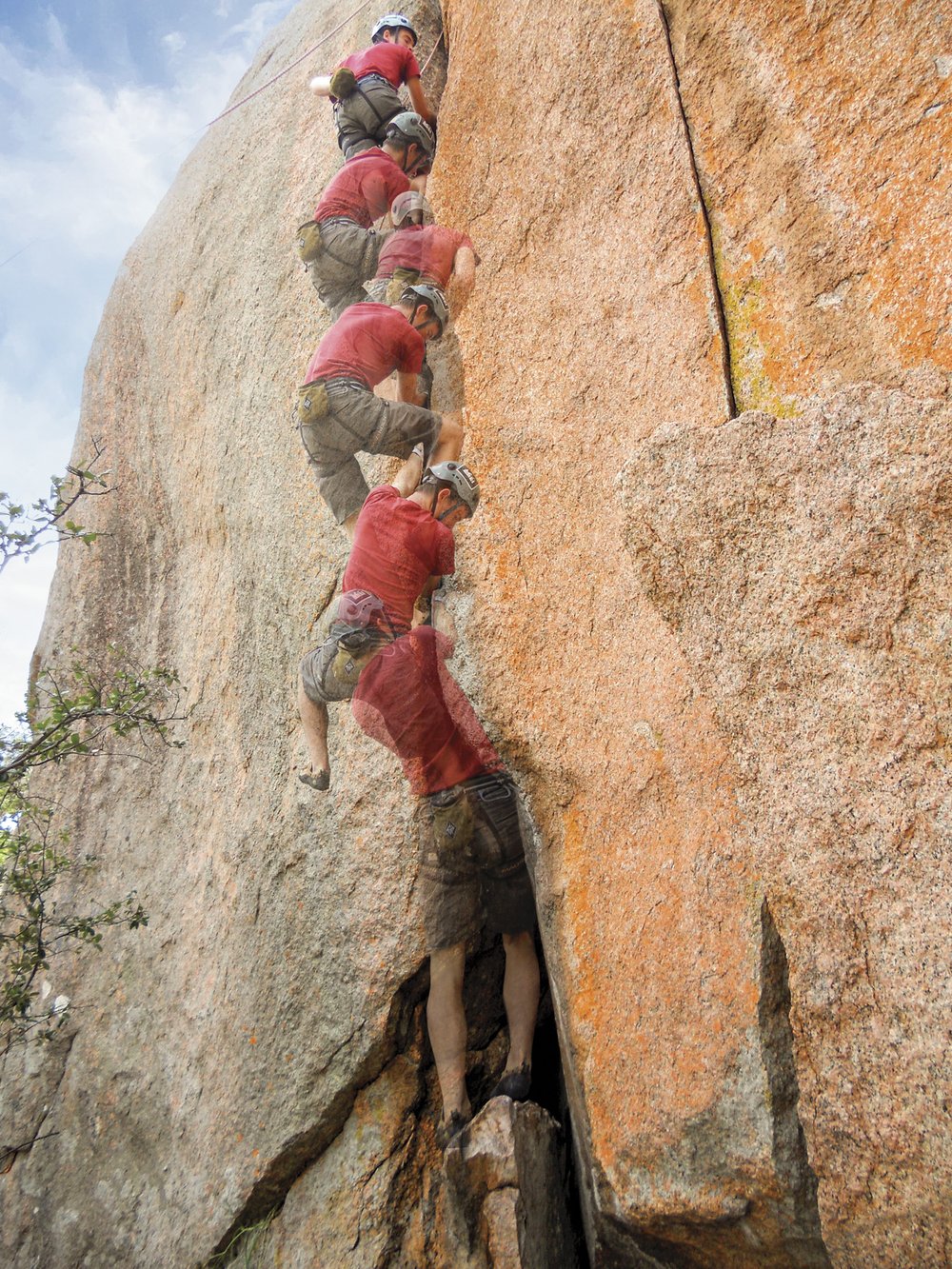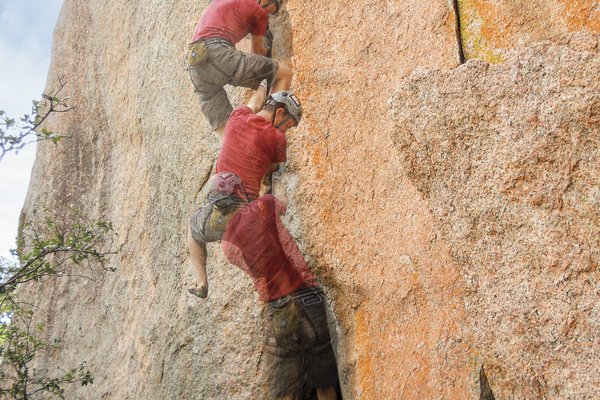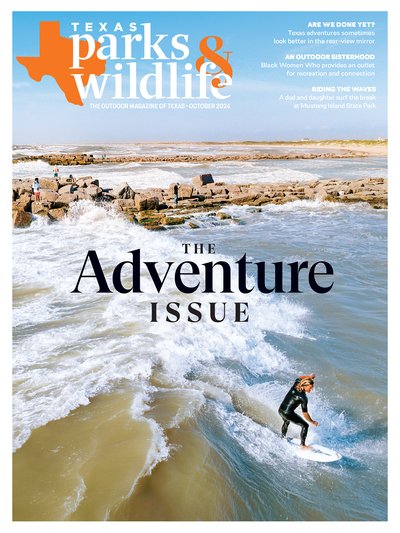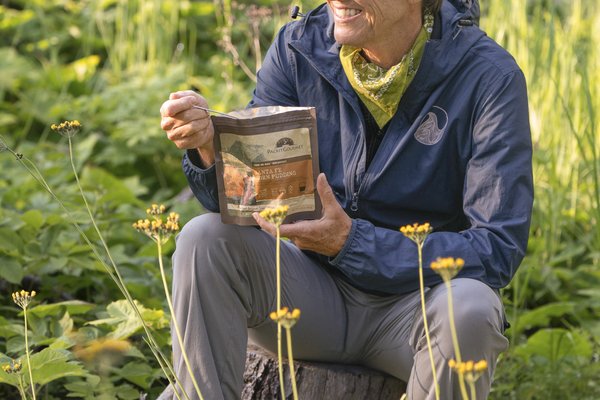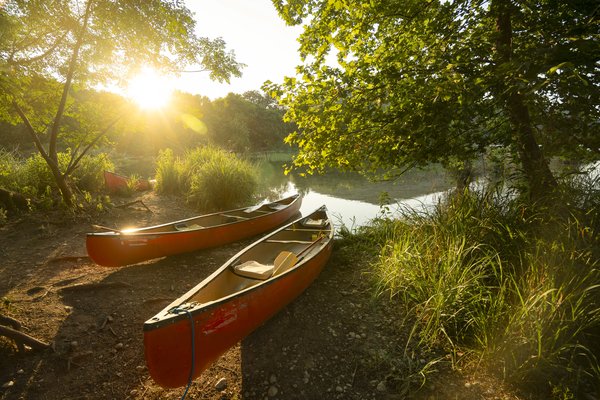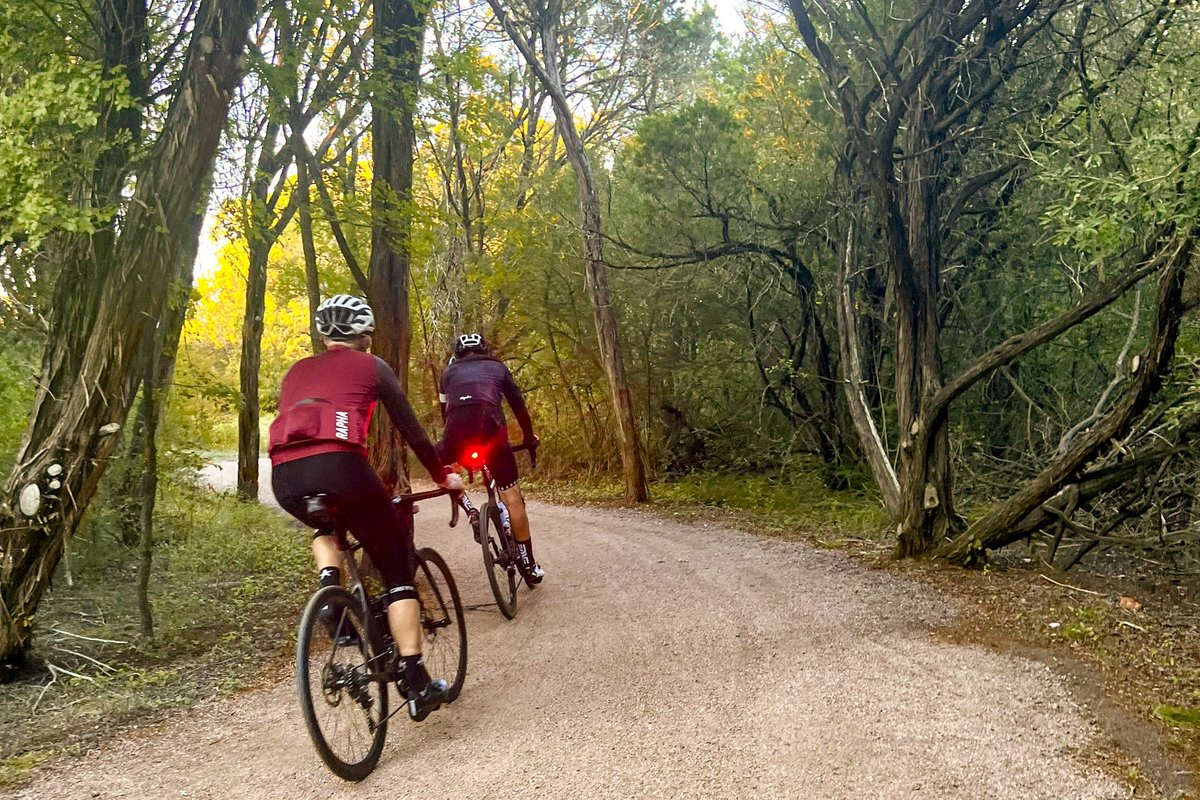I'm not sure what you’re supposed to think about when getting a massage, but I was thinking about climbing a West Texas mountain range. As my massage therapist worked her way along my spine, I recalled my adventure scrambling along the ridgeline of the Franklin Mountains. As she moved to the calluses on my feet, I thought about the miles of Texas trails where I had earned them.
I still don’t recognize this version of myself — the seeker of creature comforts, like a massage. In my mind, I’m still the person joyfully suffering through sundry outdoor adventures. In this moment, and for 20 years, I’ve wrestled with the natural inclination toward comfort — and my perhaps unnatural drive to pursue discomfort.
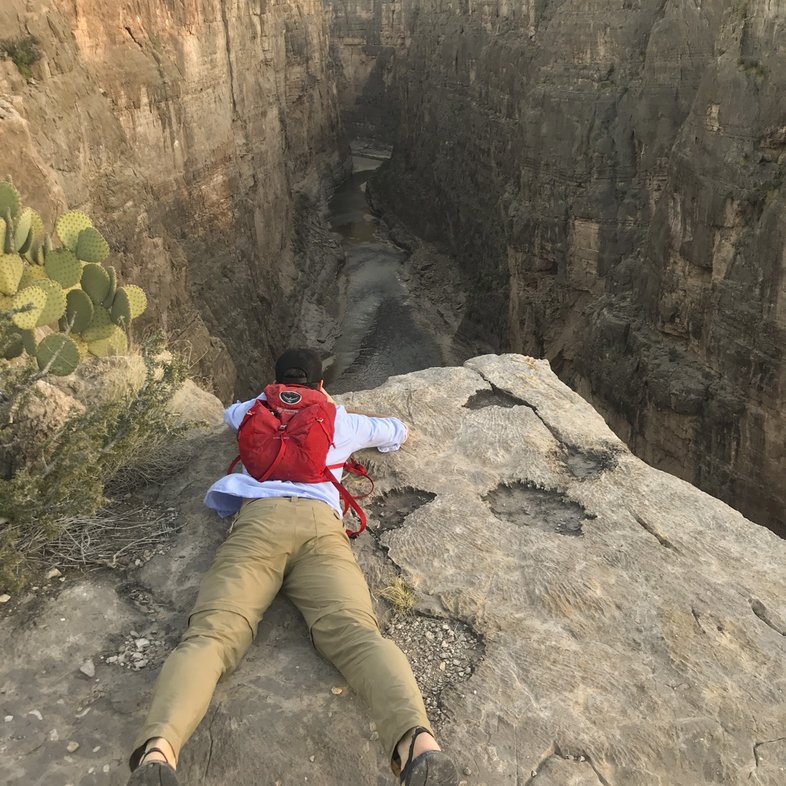
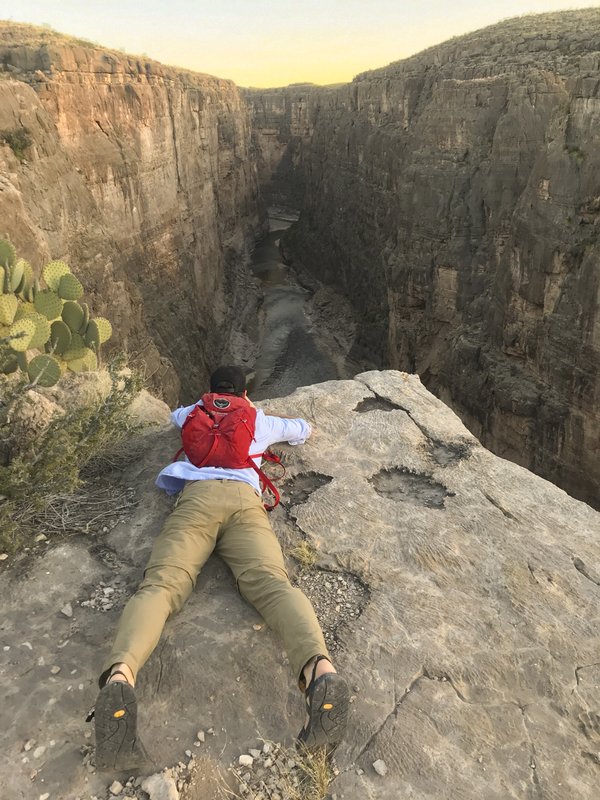
The Types of Fun
For someone who loves the outdoors, and who has spent most of my life exploring Texas parks, “I can’t wait until this is over” is my surprisingly frequent refrain. There’s a moment on most of my outdoor adventures when I can’t wait for it to end. As I grew up in the Texas Hill Country and started to adventure on my own, the miserable circumstances I found myself in were often exactly the kind of fun I had planned. It’s called Type 2 Fun.
Type 2 Fun, a term lovingly coined by outdoor adventurers, refers to activities that are miserable while they’re happening but transform into epic tales of adventure once they’re over. This kind of fun is most enjoyable upon reflection. They offer a sense of accomplishment and a story to tell around a campfire. Type 1 Fun, by contrast, is good, simple outdoor fun. It’s throwing a frisbee in the park, swimming at the lake and generally deriving joy from within our comfort zone. Before I started to crave the discomfort of Type 2 Fun, I had to learn to be comfortable in the outdoors.
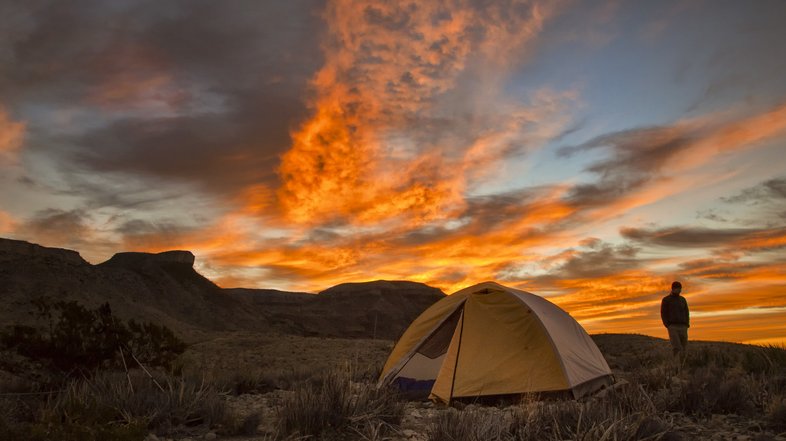

From Surviving to Joyful Suffering
“I can’t wait until this is over,” I said to my tent-mates, my fellow gangly, pre-teen Boy Scouts. We were kids learning to backpack under the watchful eyes of our Scout leaders, camping in the backcountry of Lost Maples State Natural Area, frozen from indecision and also just frozen. A night of freezing rain left pools of water inside our flimsy, apparently water-soluble tents. Our cotton clothes and tiny sleeping bags clung to our skin in a wet, cold embrace. We mustered the courage to peek outside our soggy nylon tent — still raining, still cold. We were left with one miserable choice: Be cold outside the tent or be cold inside the tent.
In that chapter of my outdoor life, I absorbed the basic concepts of how to avoid discomfort in the outdoors. I learned what to carry in my pack, how to tie knots, how to start a campfire (something most pre-teen boys don’t need much help with), and in that moment, the importance of pitching your tent effectively. The goal was simple in those early days: Have a thorough plan to be comfortable outside and the skills to improvise if your plan goes wrong.
“I can’t wait until this is over,” I thought to myself as I checked my watch repeatedly under the clear, dark, Hill Country sky. I was desperate for dawn and the accompanying warmth of the sun. It was 4 in the morning. Enchanted Rock was barely visible against the starlit sky. Beside me on the ground were the same gangly boys, now posturing young men, beginning to venture into the wilderness of our own accord.
That night, we’d disregarded the freezing temperatures in the forecast, opting to “cowboy camp” under the stars rather than set up our tent. After a sleepless night, I whispered, “Is anyone awake?” “Yes,” they responded in unison. Our shared misery came with a certain level of camaraderie. We packed our gear and began a pre-dawn hike back to the car.
In those years, I was nervously searching for the competence and courage to plan outdoor adventures without adult supervision. I assumed there was some official rulebook for how to backpack that everyone else had except me. One day it clicked: I had as much experience as anybody else, and with the right gear and knowledge, I could handle most situations and overcome some adversity. “Just stay alive” became my outdoor goal as I fumbled my way into adulthood.
“I can’t wait until this is over,” I said to my hiking partner as the West Texas sun set on the second day of our 10-day backpacking trip through the Big Bend region. A day of off-trail hiking in the sandy arroyos of a remote stretch of Big Bend Ranch State Park left us riddled with blisters. Thorns had punctured our skin and our optimism for completing the trek. We were pioneering the route for the Big Bend 100, the longest established backpacking route in Texas. We had traced a line on the map and said, “This will be rough, but let’s do it.”
Following a mostly uncharted route through a desert full of thorns, blazing heat and freezing temps, we stood on the South Rim of the Chisos Mountains in Big Bend National Park a week later. We were beaten-down, exhausted, relieved to be finished, but even more grateful to have done it. At this point, in my early 30s, I was thoroughly comfortable being uncomfortable. I had been a backpacking instructor for a decade. I was armed with the skills, confidence and some lingering young adult bravado. The goal in this chapter was going bigger, or further, or venturing where no one had gone before. I was planning trips that would almost certainly make me miserable at some point. I had found, and embraced, Type 2 Fun.
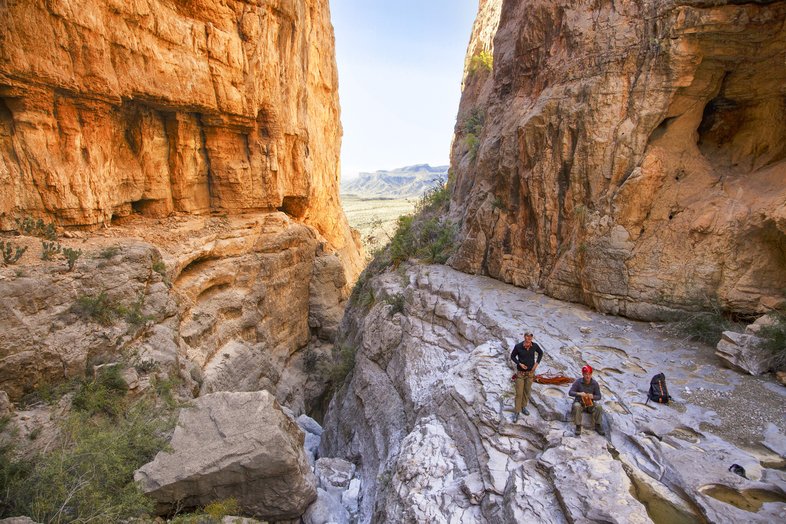
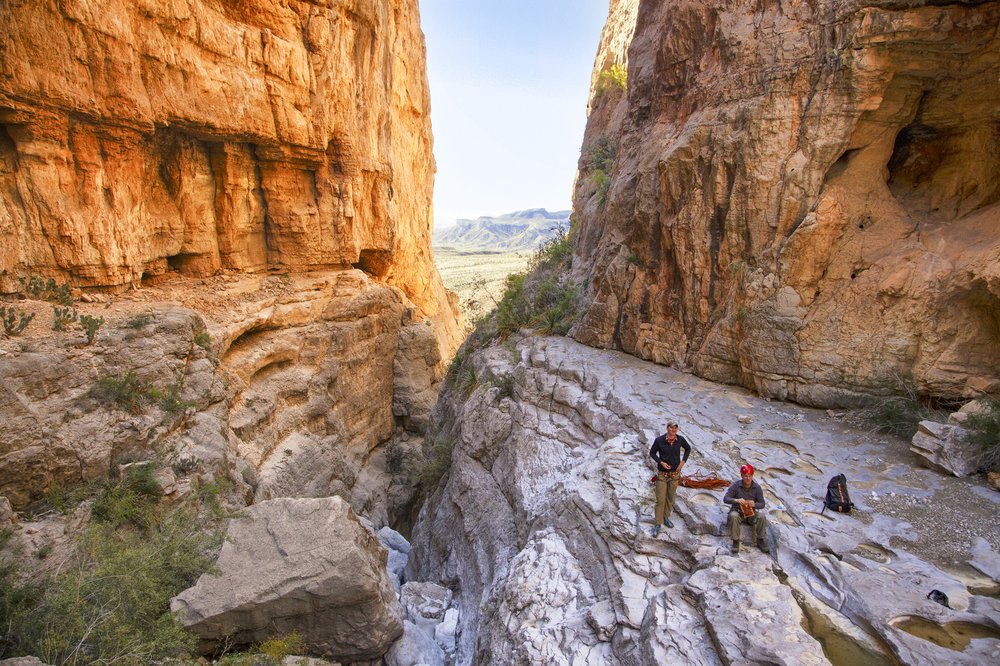
The Importance of Type 2 Fun
I love the Type 1 Fun in my life – picnics in the parks and tubing the river are joys we all deserve. So why would we go out of our way for any other type of fun? Michael Easter, author of The Comfort Crisis, offers this: “A radical new body of evidence shows that people are at their best — physically harder, mentally tougher, and spiritually sounder — after experiencing the same discomforts our early ancestors were exposed to every day. Scientists are finding that certain discomforts protect us from physical and psychological problems like ... heart disease, cancers, diabetes, depression, and anxiety, and even more fundamental issues like feeling a lack of meaning and purpose.”
Personally, I’m probably considering more strenuous trips to the hills because I’ll be heading “over the hill” later this year, and want to reconnect with my younger, more adventurous self. But there are plenty of other reasons to pursue Type 2 adventures — and we may never know exactly what’s at the core of our desire to seek out experiences that aren’t fun until we look back on them. Maybe we’re most alive in those moments when we’re a little uncomfortable, because it means we are focused and present in our bodies. Maybe, when it’s all over, we most remember the moments we wanted to forget while we were in them. Or maybe, it’s just that the massage feels best when you really, really need it.
A Road Map for Type 2 Fun
I reached out to my adventure buddies — all of them former climbing guides and adventure dirtbags — for advice on getting more Type 2 Fun. They offered tips on how to plan for a little more discomfort, and more “I can’t wait until this is over” moments.
Wake up when you don’t want to: Watch the sunrise, see the meteor shower peak at 2 a.m., get your workout in before others wake up.
Bad weather isn’t a good enough excuse: Trail run in the rain, camp in the cold.
Lock yourself in: Book the trip, sign up for the adventure race, commit yourself and see what happens.
Say yes: In adventures or otherwise, say yes, find a way to make it work. Spontaneity can take us out of our comfort zone.
Go on a solo adventure: Experience the discomfort of solitude if your friends can’t join the camping trip.
Try a new activity: You’ve been a great climber for most of your life? Time to learn to kayak.
Take the scenic route: Slow down, walk when you should bike, bike when you should drive.
Disconnect: Turn your phone off and get bored.
My Texas Type 2 Fun List
Since those early days, I’ve had a lot of great Texas Type 2 Fun. This is what I would call my top 10 list of trips I went into expecting (seeking?) some amount of discomfort:
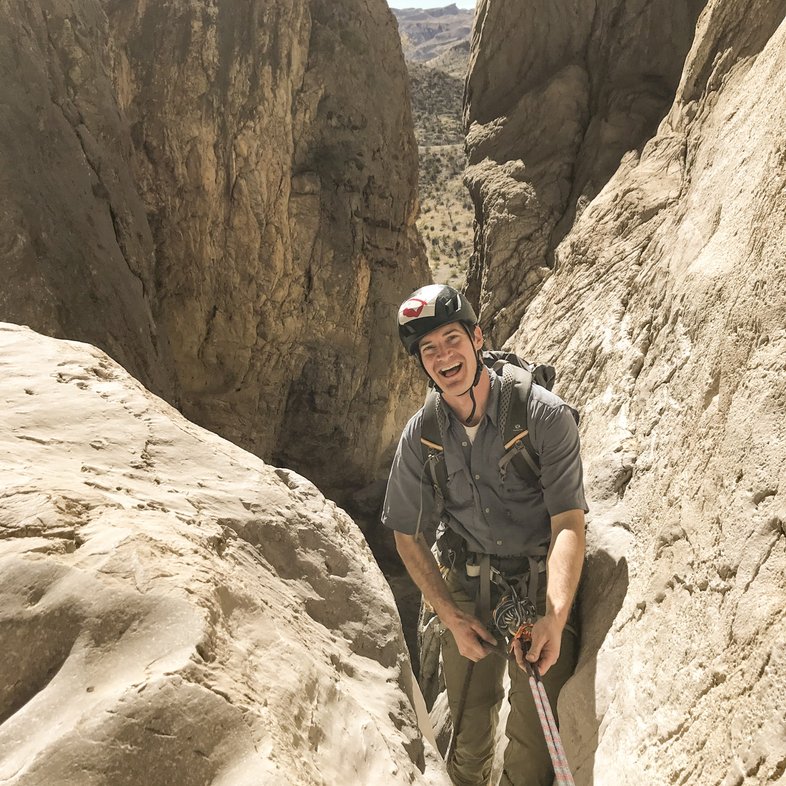
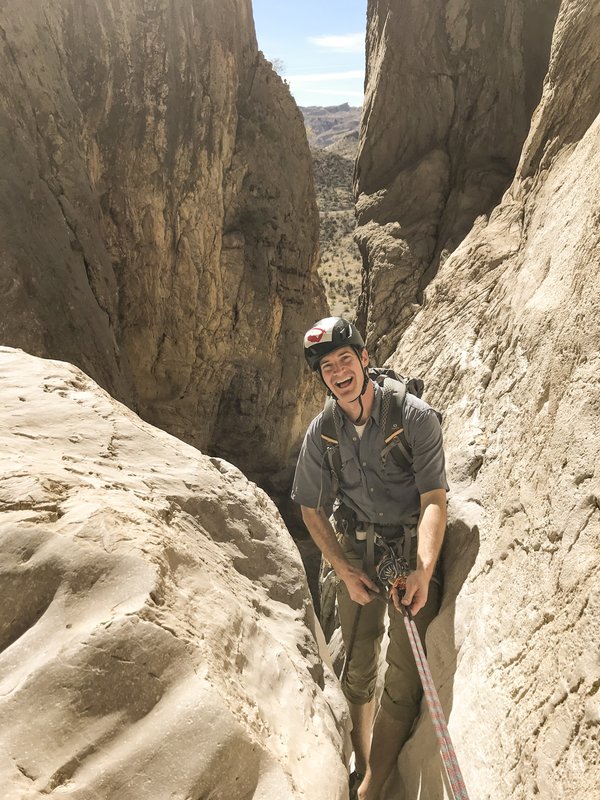
Canyoneering Big Bend
There’s plenty of good Type 1 Fun on this 16-mile out-and-back trip during which we rappelled through a series of canyons, but voluntarily stepping off a cliff into the unknown is always a little uncomfortable.
Paddleboarding the Devils River
I completed this overnight paddling trip down the Devils River —Texas' wildest river — on my stand-up paddleboard despite losing all three of my board's fins.
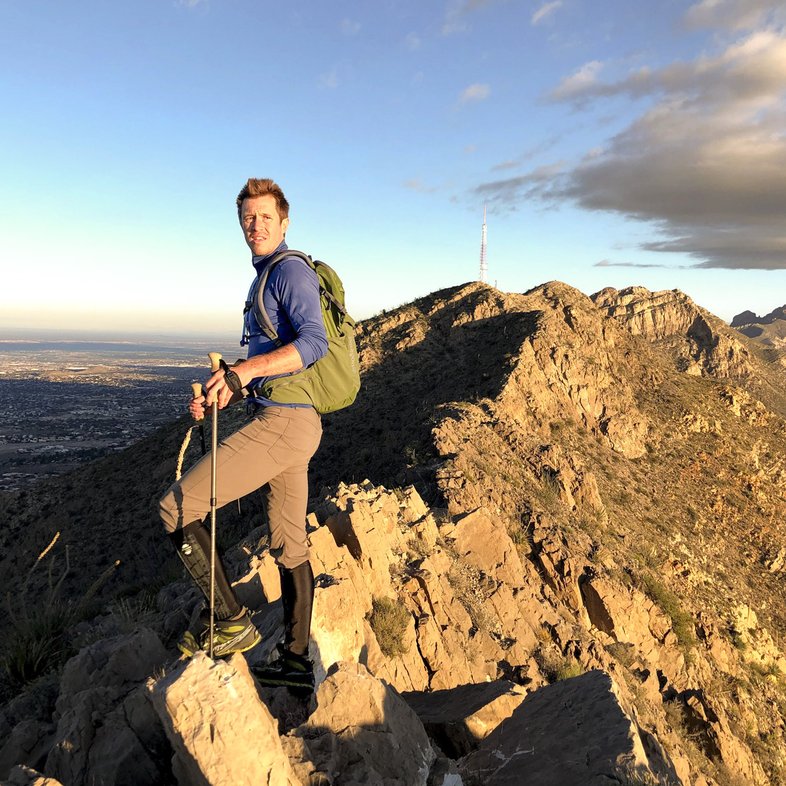
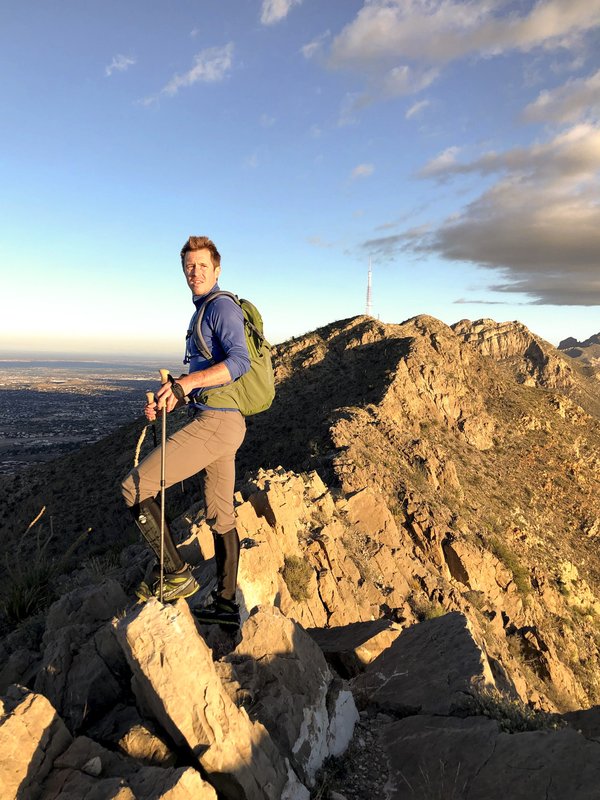
Hiking the Franklin Mountains Ridgeline
Balance-beam on a ridge like a knife's edge, anyone?
Date Night Caving Trip
It’s hard to impress your date when you’re trying not to panic as a 6-foot-2, 180-pound dude getting ready to go through “The Birth Canal.”
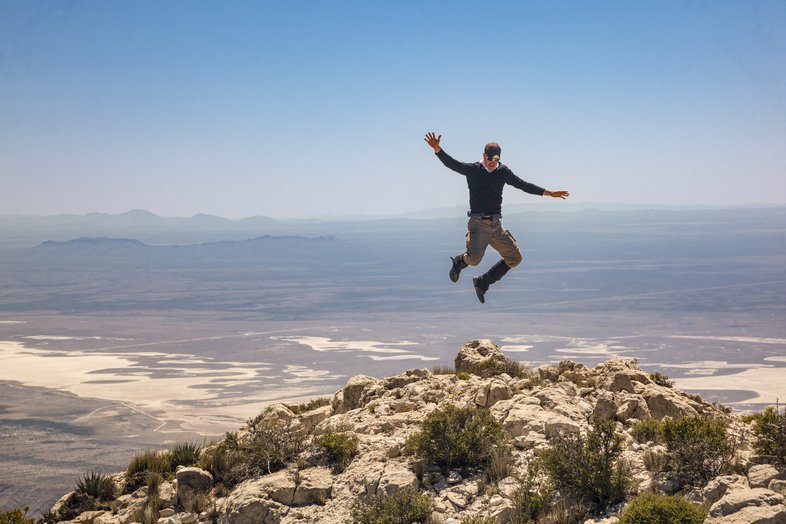
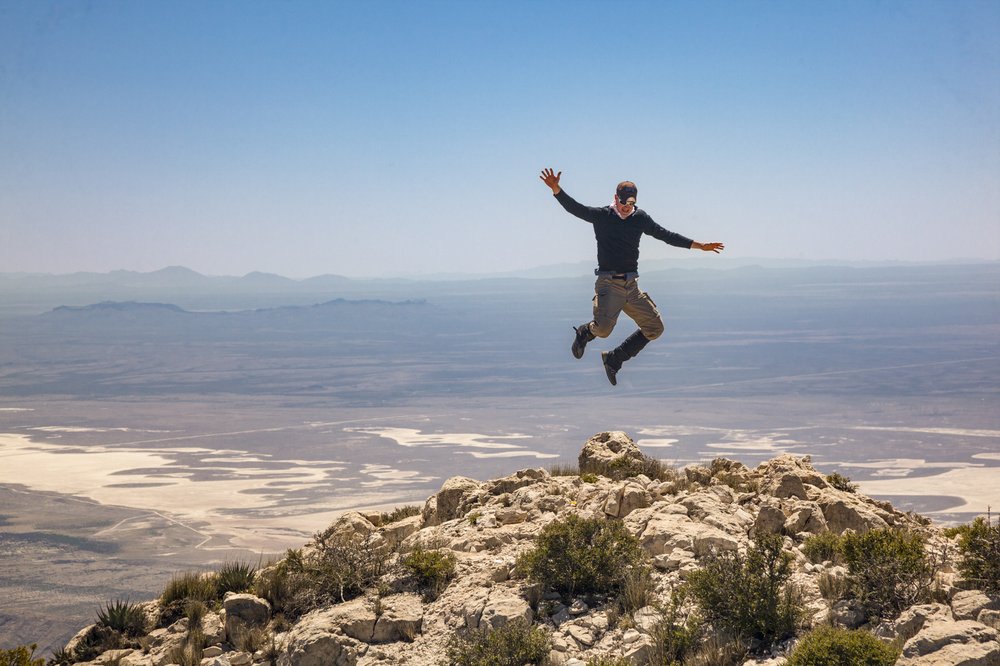
The Tallest Peaks in a Day
A 17-hour off-trail slog to successfully bag the four tallest peaks in Texas.
The Colorado River 100
My first (and last) canoe race was a 13-hour push — 60 miles (100 kilometers) from Austin to Bastrop on the Colorado River.
The Big Bend Epic Trail
56 miles on mountain bike through the fiercest desert in Texas.
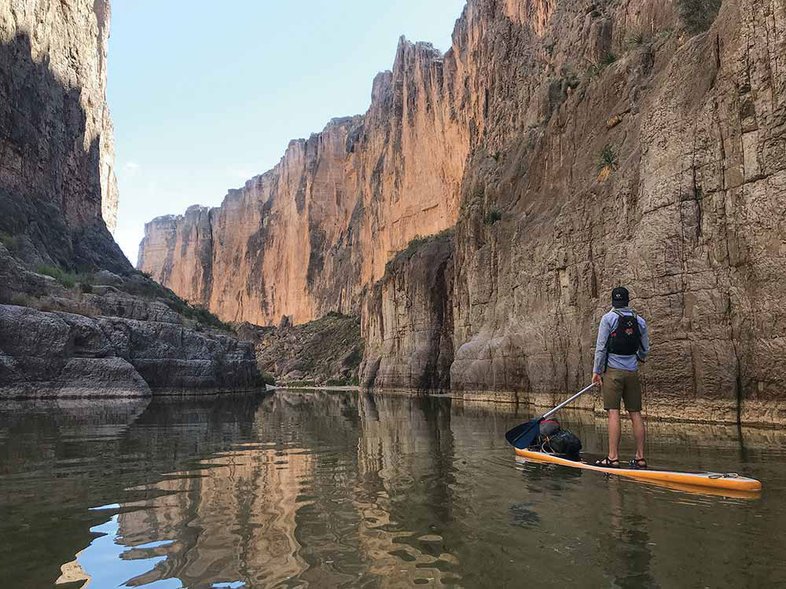
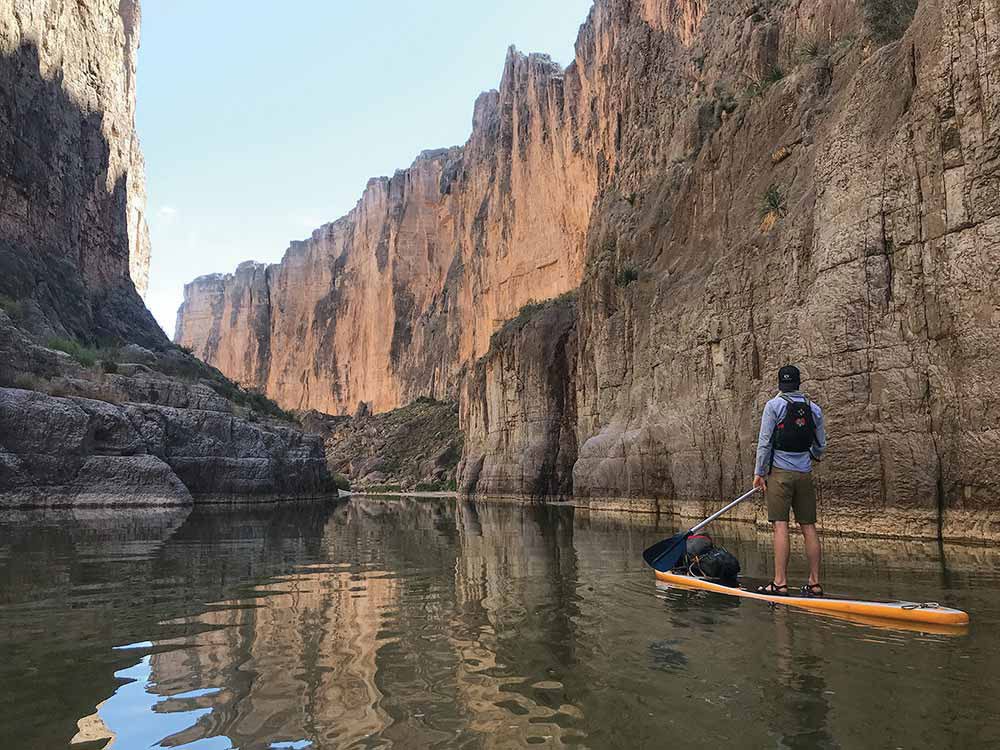
Paddleboarding Santa Elena Canyon
We were cold and bruised, our stand-up paddleboards barely holding on, and we accidentally had lunch with a wild bull on a river island.
Canoeing the Lower Canyons of the Rio Grande
A low point was realizing we had been paddling with a snake in our canoe for most of the day.
The Big Bend 100
Dreaming of a trip no one had done before. Mapping it, scouting it and making it happen through rough desert backcountry.
